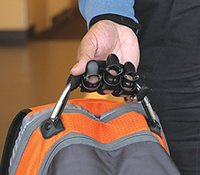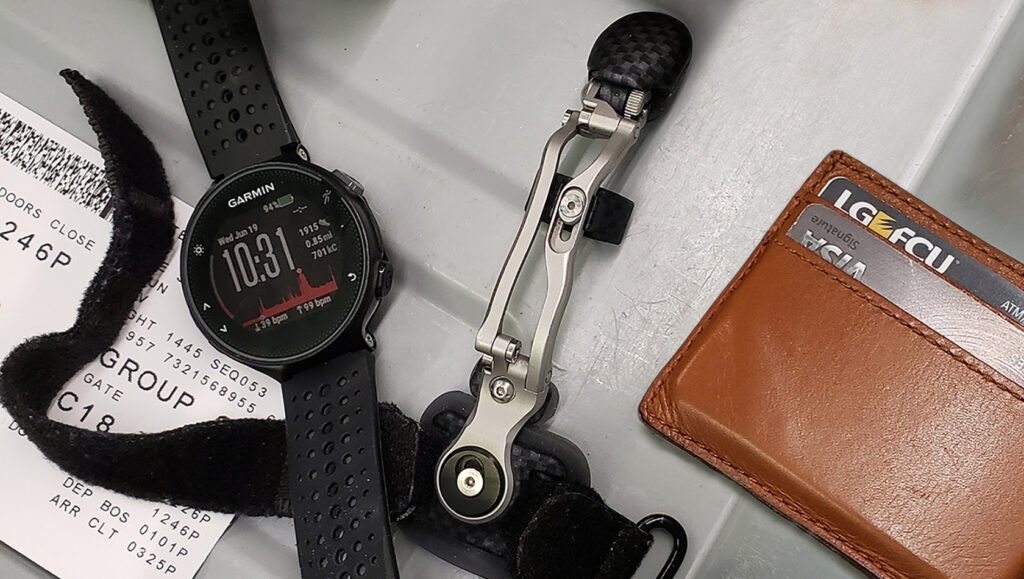Sometimes people wonder, ‘Do I need to remove my prosthetic device when I travel through airport security? What about packing it in my suitcase?’
Because it is medically necessary equipment, it’s not always required that you remove your prosthetic finger(s), but it’s important to be prepared in case you are asked.
“Traveling through airport security seems to go one of two ways,” shares Baily Armstrong, whose husband Nick wears a multi-digit Naked Prosthetics (NP) MCPDriver. “They are either fascinated by his device or they are suspicious of it.”
“But once they see Nick’s hand,” she explains, “it quickly turns into an apology.”
Bailey and Nick have a lot of experience traveling through airports. Nick is an ambassador for NP, and has attended many tradeshows across the U.S. Most recently, Nick spent time in Spain and Germany, helping promote the powerful benefits of functional finger prosthetics for the first time to a European market.

Nick in Berlin. Cheers!
Security Checkpoints
Most security checkpoints will ask that you treat your prosthetic the same way you would treat your belt or wallet and place in the bins for scanning. It’s best to inform the TSA officer about your device. The same recommendation is in place if you wear a cast, support brace, sling or support appliance, and if you require assistance with the screening process. You may provide the officer with the TSA notification card or other medical documentation to describe your condition.
You can pack your prosthetic device in your check-on or carry-on bag, though it may be subject to search.
Some security officers are too nervous to ask about the device, Bailey says, but some are very curious. “Nick is a great sport about it and will answer anyone’s questions though!”
Additionally, TSA officers may swab your hands, mobility aids, equipment and other external medical devices to test for explosives. Like Nick, being open about the device can make the process easier for everyone.

Screening in Standard Lanes
Below are some specifics from the TSA official website:
Passengers with prostheses, casts, support braces, slings or support appliances can be screened by advanced imaging technology, or a pat-down. If the standard lane does not have advanced imaging technology, you cannot hold a proper stance for advanced imaging technology screening, or if you are eligible for expedited screening, you may be screened by a walk-through metal detector.
The prosthesis, cast, support brace, sling or support appliance is subject to additional screening, which may include screening of the device and/or hands for explosives and screening by a hand-held metal detector on non-metallic devices. If your support brace alarms, you will need to remove it for X-ray screening.
You will not be required to remove your prosthesis, cast, sling or support appliance. However, these devices are subject to additional screening, including visual inspection.
It is worth noting, you can voluntarily remove your prosthesis, cast, support brace, sling or support appliance prior to screening. Also available upon request, you can ask for a private screening at any time.
Wherever your travel destination, this prep sheet should help things go smoother so you can enjoy your flight!
Have any travel tips or pics? Leave them in the comments below.


